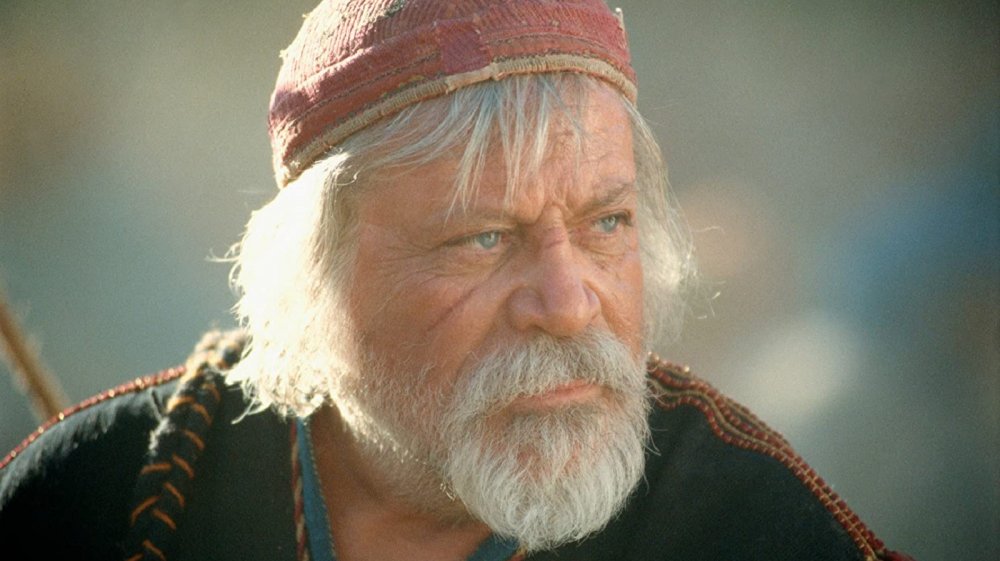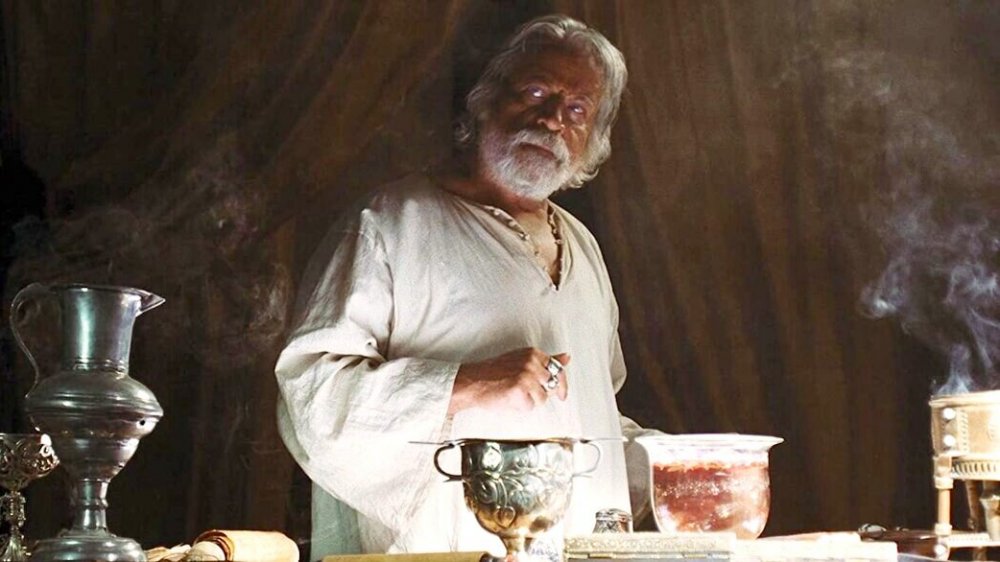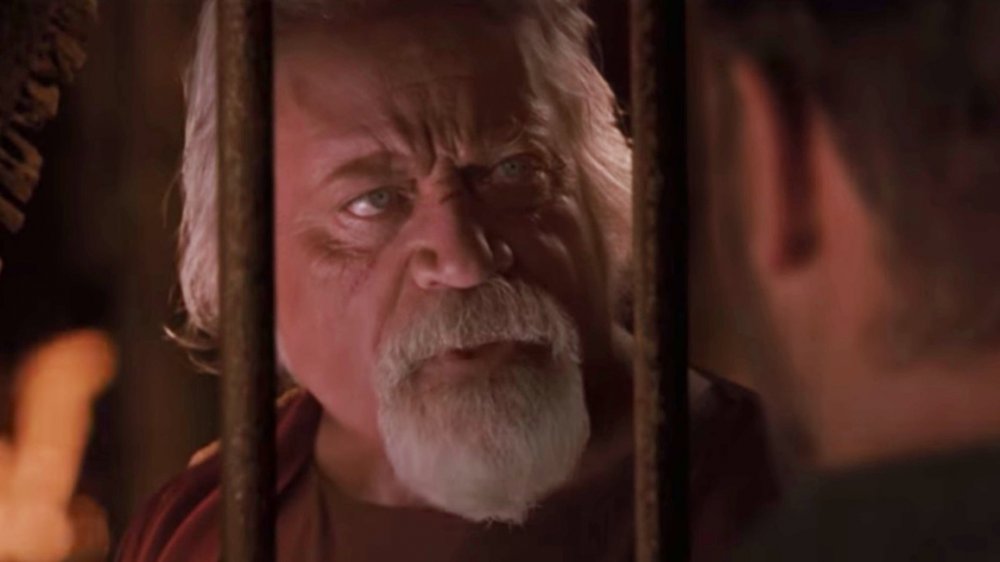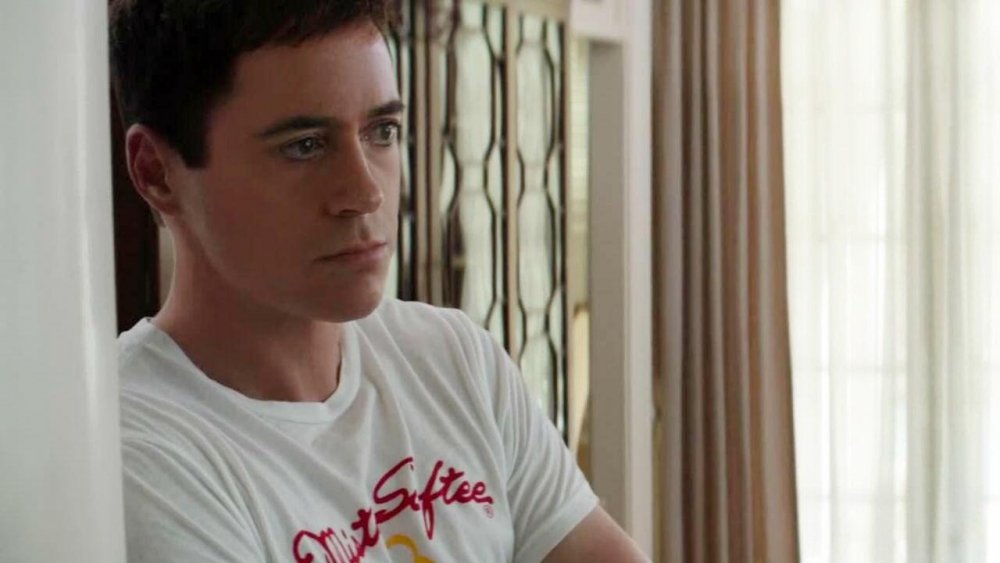Here's How They Finished Gladiator After Oliver Reed Died
Director Ridley Scott's 2000 historical epic Gladiator is a stone-cold classic, but it wasn't without its share of problems. In fact, shooting the film was often nothing short of chaotic, as was revealed in a recent oral history published by Variety. Star Russell Crowe, who portrayed the betrayed Roman general-turned gladiator Maximus, remembered the stress of working with an incomplete script, which was still undergoing major revisions well into filming. Screenwriter David Franzoni, who called Gladiator's production process, "A very '60s way to make a film," recalled spending days on the set, "Drinking whiskey and smoking cigars" before staying up into the wee hours of the night writing new pages. In addition to the constantly evolving script, Scott also had to deal with reluctant stars (Crowe and Joaquin Phoenix, who played the power-hungry would-be Emperor Commodus, both had to be coaxed into participating), even more reluctant tigers (some of the film's trained animals straight-up refused to attack Crowe during the dramatic Colosseum scenes), and late in production, the death of a cast member who happened to be a Hollywood icon.
Oliver Reed was known largely for two things: Expertly portraying villains and heavies, and embarking upon legendary drinking binges. How legendary, you ask? In the '70s, Reed was a frequent drinking partner of the Who's famously insane drummer Keith "The Loon" Moon, and by later in that decade and on into the '80s, journalists and talk show hosts were far more likely to ask the actor about his drinking habits than his latest film project (to the actor's endless annoyance). After experiencing a severe career slowdown in the '90s, Reed was cast in Gladiator as Proximo, a former gladiator and trainer who became a friend and mentor to Crowe's Maximus. The film might have been the start of a late-career comeback for the 61-year old; instead, it became his final completed work.
Oliver Reed had almost finished his work on Gladiator when he died
The way in which Reed made his exit sounds like an urban legend of the most ridiculous type, but his final hours are quite well-documented. According to Variety, the actor had promised Scott that he wouldn't drink on filming days while shooting on location in Malta, and he kept that promise, only imbibing on weekends during breaks from shooting. One Saturday night, Reed held court at a local pub, which was also being visited by a group of five sailors on shore leave. Of course, the five burly guys immediately challenged the famously boozy actor to a drinking contest, so Reed proceeded to out-drink them all, by some accounts downing about eight pints of beer, a dozen shots of rum, half of a bottle of whiskey, and some cognac for good measure (via Guide Me Malta). Then, Reed got it into his head to arm-wrestle all five of his new buddies, defeating them one by one.
Shortly afterwards, the actor collapsed, and was later found to have suffered a heart attack. He passed away en route to the hospital, and Gladiator's stunned cast and crew spent the rest of the shoot in mourning ... but then, there was still the matter of Reed's final scenes, which had not yet been completed.
A combination of techniques were used to finish Oliver Reed's scenes in Gladiator
After a minor adjustment to the ever-evolving script, two scenes were shot which would complete Proximo's arc. In the first, Proximo visits a jailed Maximus, whose plan to escape and reunite with his still-loyal armies was discovered by Commodus. This scene was by far the most difficult to achieve, and it was done with the kind of digital trickery that is commonplace today, but which was practically unheard of 20 years ago. A stand-in was used for the actual shoot, then, in post-production, special effects house The Mill used extra footage of Reed to digitally graft the actor's face onto the stand-in's body. The scene was shot in shadow, with bars in between the stand-in and the camera, making the splice tougher to spot — and amazingly, this scene still holds up quite well today.
In the second scene, Proximo allows himself to be set upon and killed by the Praetorian Guard while Maximus escapes. For this scene, another stand-in was shot from behind for one portion, while alternate footage of Reed from an earlier scene (in which he tells Maximus, "We mortals are but shadows and dust") was digitally edited and inserted into the frame for another. This scene also still appears relatively seamless today, and with good reason: According to the website Legends Revealed, the patch job cost $3.2 million for approximately two minutes of film.
Oliver Reed's performance in Gladiator was a glimpse of the future
Gladiator constituted an early example of what a powerful tool CGI could be even when used in relatively subtle fashion — as opposed to, say, the rampaging dinosaurs of 1993's Jurassic Park (which were achieved with a huge assist from VFX master Stan Winston's animatronic work), Gladiator employed digital trickery that was meant specifically not to call attention to itself. The Mill's face-swap can be seen as a proof-of-concept for later, more dramatic effects, such as the "de-aging" tech often employed by Marvel Studios, or even the wholesale recreation of long-gone actors, like the digital version of legendary actor Peter Cushing which was used to bring back Grand Moff Tarkin for Rogue One: A Star Wars Story.
It's safe to say that Reed had no idea he would be a part of such a complex and fascinating legacy, but one can only hope that before he passed, he came to realize what a special project he was involved with. Gladiator won five Academy Awards, including Best Picture and a Best Actor statue for Crowe, and Reed was posthumously nominated for a BAFTA award for his role as Proximo. The man was a rare breed of actor, and Gladiator, a rare breed of Hollywood epic, is dedicated to his memory.



